Whether you need space in the yard for a game of soccer or simply wish to enjoy the view of your property, a lush and healthy lawn is the perfect prescription.
There are few surfaces more suitable for running and active backyard games than well-manicured turf.
As for appearances, a dense and verdant layer of grass makes everything else in your landscape look so much better, from your nearby plantings to the adjacent walkways.
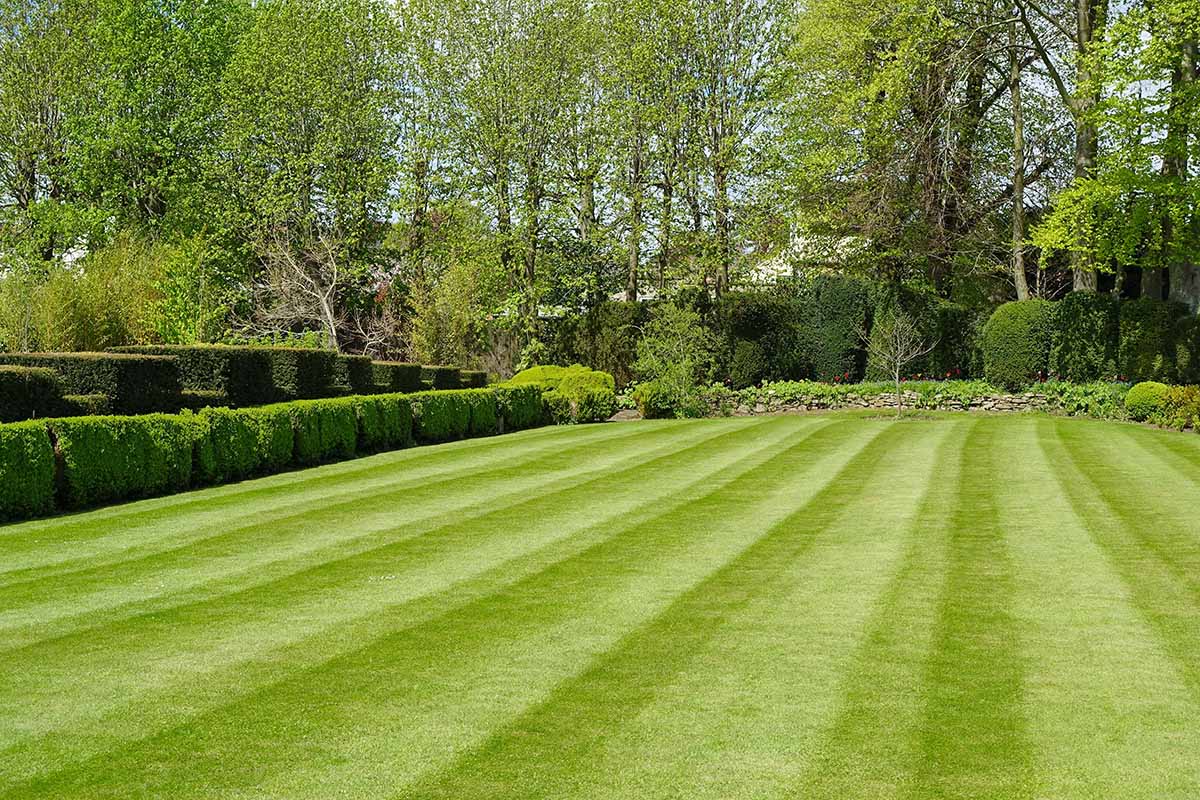
We link to vendors to help you find relevant products. If you buy from one of our links, we may earn a commission.
A fine, flourishing lawn is something that many homeowners strive for, but not all achieve. The “why” of it all boils down to this: it isn’t easy to cultivate a living carpet of greenery in the yard.
But while caring for healthy turf may seem difficult, it’s usually pretty straightforward.
Few of us have that 100 percent perfect green lawn, but there are some simple things that anyone can do to achieve a nice expanse of grass!
Read on for some effective lawn care tips:
1. Seeding
When seeding new turfgrass, you should consider the type of grass you’d like to grow. A big part of that decision depends on where you’re located.
Warm-season grasses such as bermuda (Cynodon dactylon), zoysia (Zoysia spp), or centipede (Eremochloa ophiuroides) grass grow best in areas where summer temperatures typically remain above 75°F.
While cool season grasses such as Kentucky bluegrass (Poa pratensis), creeping bentgrass (Agrostis stolonifera), and tall fescue (Lolium arundinaceum) prefer a range of 60 to 75°F at the peak of the growing season.
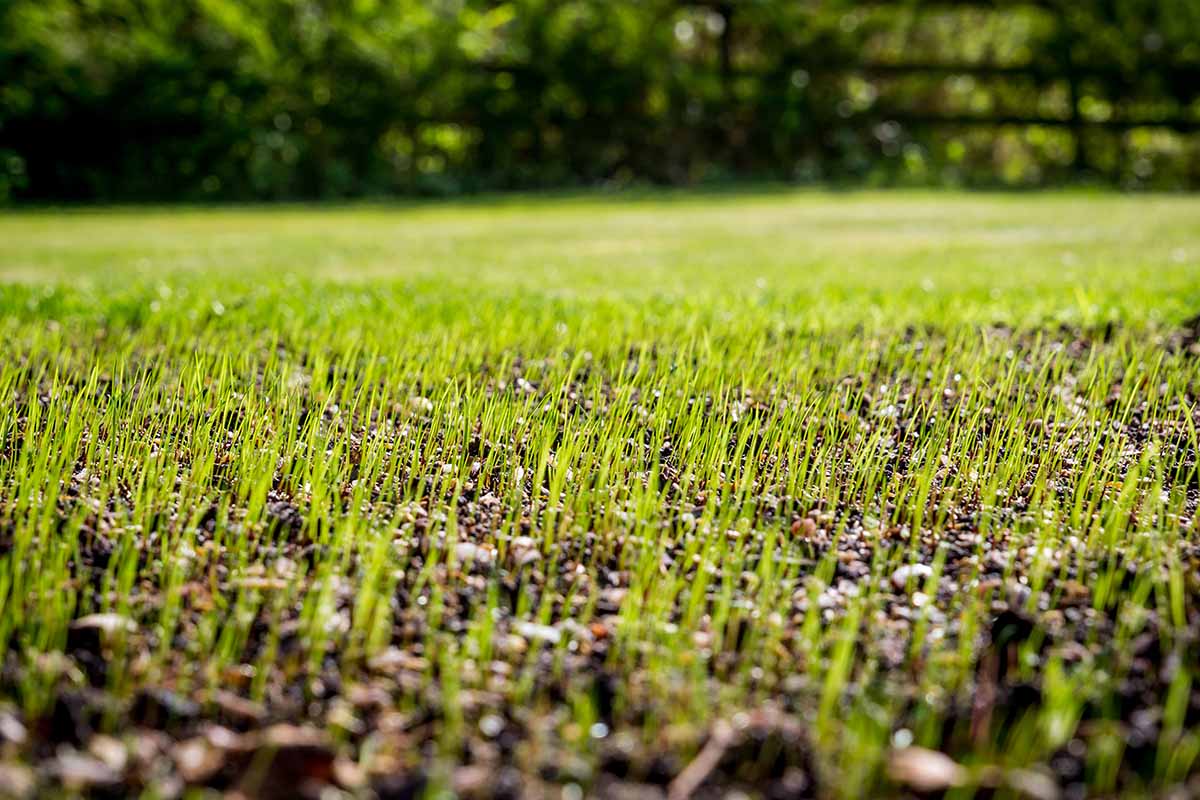
Additionally, creeping types – all of the above-mentioned grasses, except tall fescue – spread via rhizomes and/or stolons, while bunch types like tall fescue tend to grow bushier without actually spreading.
Different grass species have various tolerances, maintenance requirements, colors, shapes, and sizes… there’s a lot to consider!
For inspiration, you can look at local parks or ask your neighbors what species they use for their lush lawns.
Be sure to choose species that are compatible with your landscape’s specific conditions. If most of your lawn is in full sun, choose grasses that prefer full sun, and likewise for shady spots.
If you’re growing warm season grasses, seed in late spring to very early summer. And for cool season grasses, seed in early spring or early fall.
Avoid seeding in the heat of summer, as the seed can become scorched and dried out, and may fail to germinate.

Prepare the site by raking or tilling the soil so the surface is nice and loose.
A simple hand-cranked or push broadcast spreader can help to spread seeds in large areas with even, accurate coverage.
For a mini broadcast spreader that can hold enough seed to cover 5,000 sq. feet of lawn, check out this Turf Builder spreader from Scotts, available via Amazon.

If you are seeding a smaller area, you can broadcast by hand, just try to make it as even as possible.
Not every seed will germinate and make it into grassy adulthood, so be sure to follow the seeding rates recommended on the package.
Rake the area lightly after seeding so that the seed incorporates into the soil.
Be sure to keep the ground evenly moist with the mist setting of your hose until your seeds germinate, grow, and become established. And speaking of moisture…
2. Watering
If you need to irrigate your lawn – mature lawns may not need watering except during dry spells – try to do it in the early morning, to help prevent moisture loss to wind, heat, and sunlight.
If you water in the heat of the day or in the afternoon, much of that water will be lost via evaporation. Plus, you probably shouldn’t ditch your work shift just to give your lawn a drink.
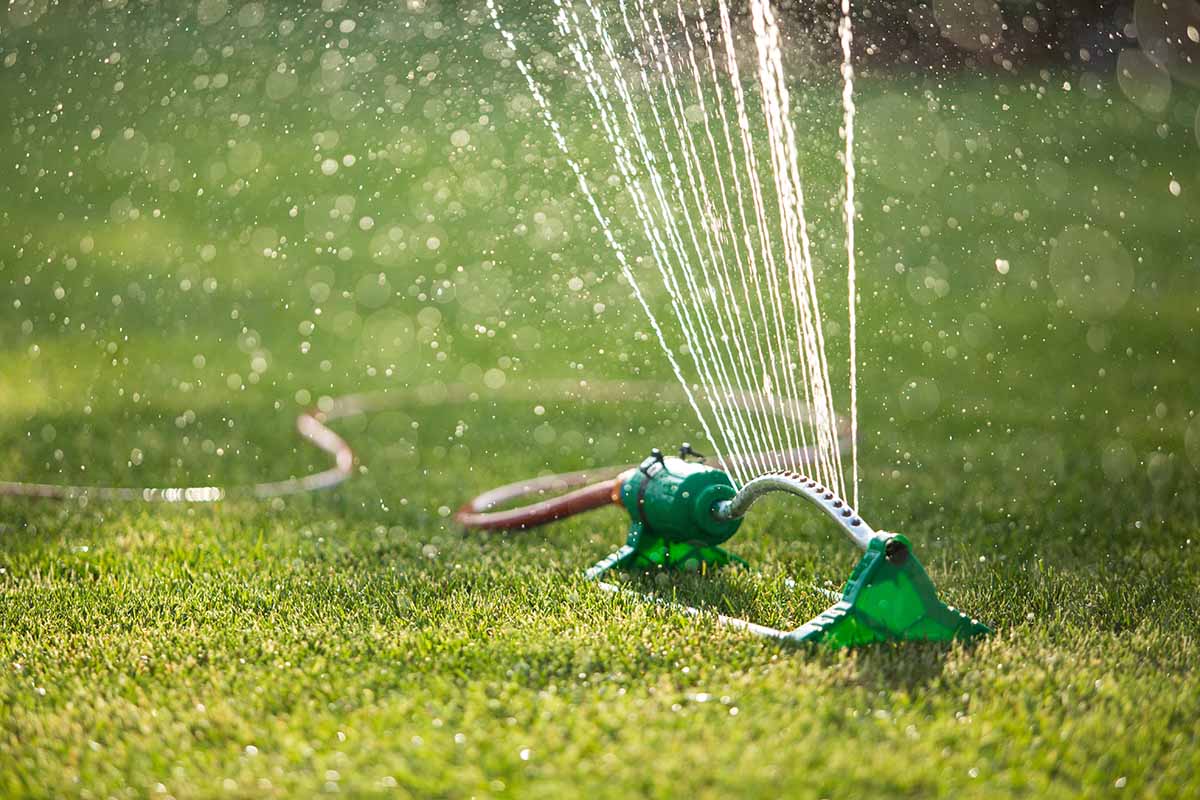
Watering in the evening causes the grass and soil to remain wet throughout the night, making it easier for bacteria, fungi, and other disease-causing pathogens to develop.
Different grasses in different climates have different moisture requirements, but a decent starting point for irrigation is to provide about one inch of water per week, including rain.

But making adjustments based on turf symptoms is always way more effective than having some magic irrigation quota, anyway.
Take stock of your lawn frequently, and alter your watering accordingly. Most of the time, you won’t have to water your lawn unless there’s a prolonged dry spell.
Signs of underwatering include:
- Brown and/or yellow patches
- Dry and crumbly topsoil
- Footprints in the yard that take a while to disappear
- Leaf blades bluish or grayish tint
- Slowed plant growth
While signs of overwatering include:
- Excessive thatch
- Mushy ground
- Pest and disease problems
- Water runoff
- Yellow grass
Deep and infrequent irrigation is better than shallow and frequent watering.
And as long as you end up with complete coverage, you can use whatever irrigation method you prefer – in-ground sprinkler systems, simple oscillating sprinklers, or even a handheld hose.
3. Fertilizing
No plants are routinely cut, compacted, or damaged as much as turfgrasses are. For continuous lush growth in spite of this abuse, proper nutrition is essential.
For optimal fertilization, it really pays to conduct a soil test, as it’s the most accurate way of knowing exactly what nutrients your soil is lacking.
Using your test results, choose the right fertilizer to shore up your lawn’s deficiencies.
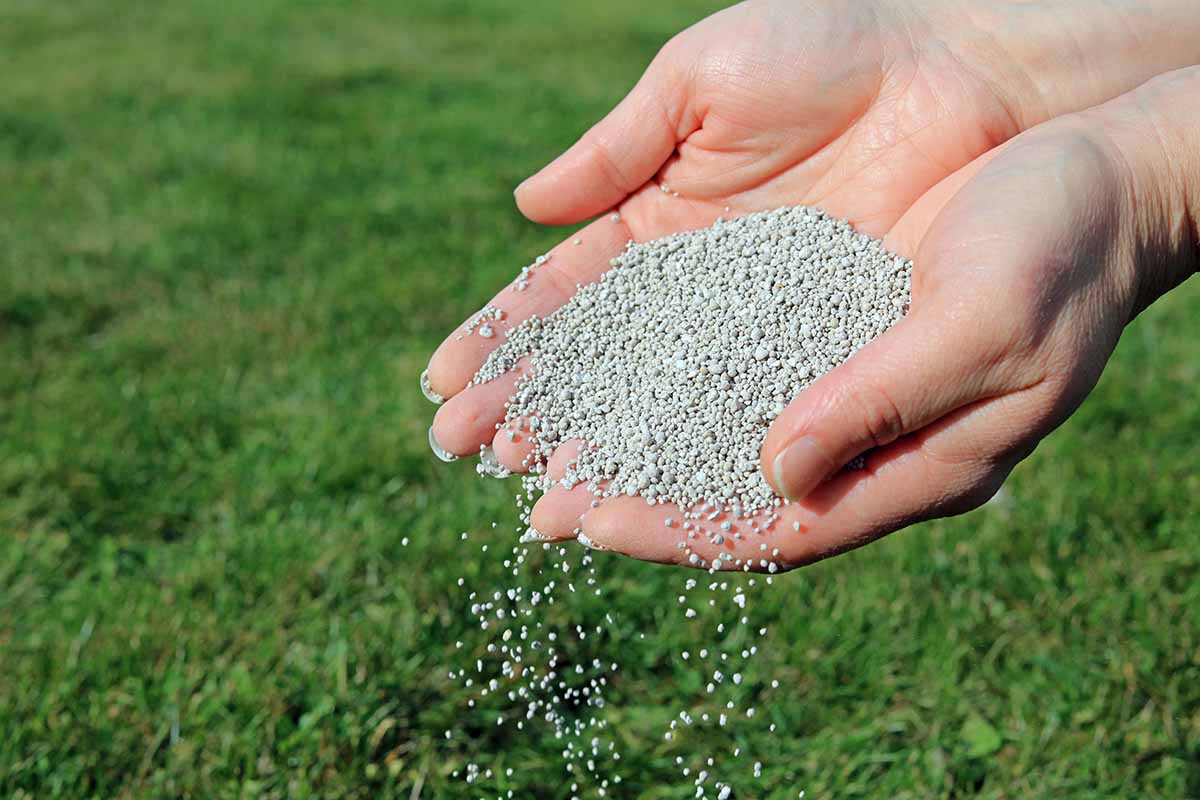
Synthetic products will be cheap and fast-acting, but the organic stuff is healthier for the environment, more sustainable, and less picky about when it can be applied.
Professional turfgrass managers will do all sorts of calculations to yield the precise amount of nutrition necessary.
Good thing, too – pro golf courses and baseball stadiums wouldn’t have the awesome-looking turf they do without some grass nerd’s thorough number-crunching.
But as a homeowner who’s lawn doesn’t host the World Series or the Masters Tournament, you should be fine with a more laissez-faire approach, by selecting an appropriate product and following the label instructions.
For most folks, a general lawn food with ample nitrogen content should suffice.
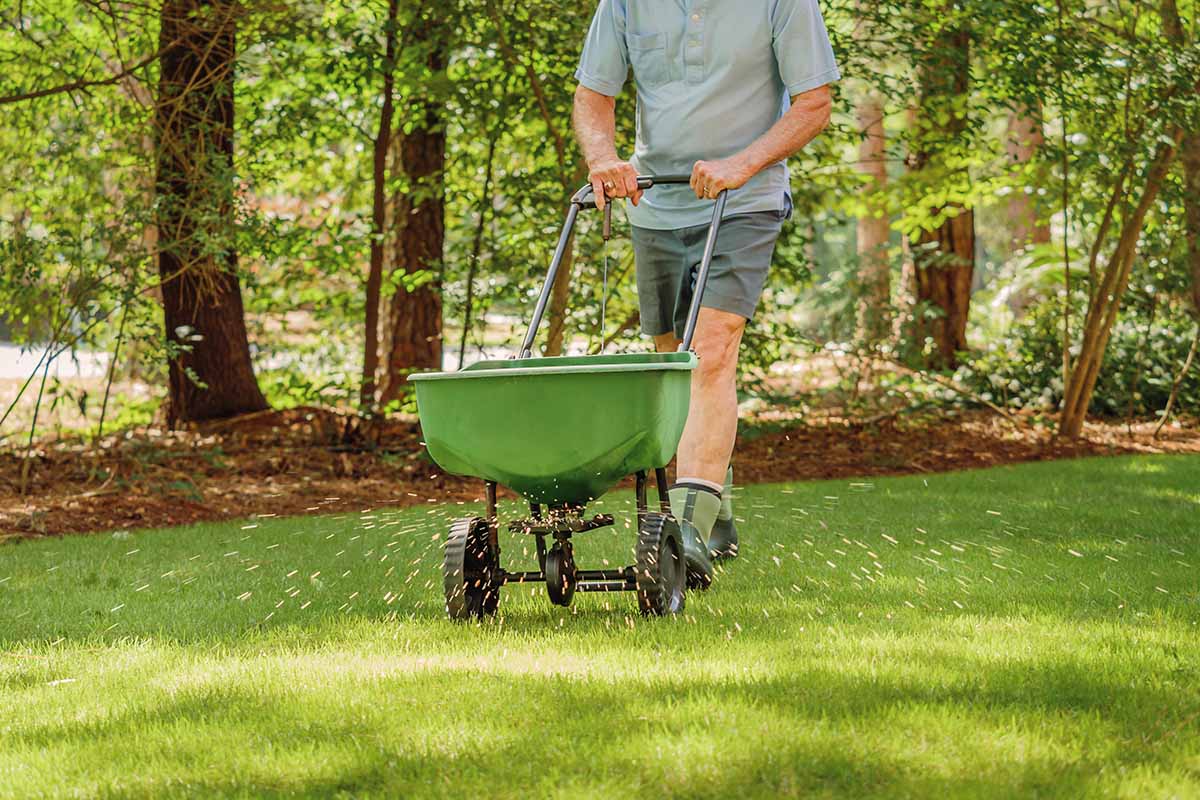
You’ll also need a spreader, like the seed-spreader mentioned above, to evenly distribute just the right amount of fertilizer at the rate you desire across your lawn’s surface.
Alternatively you can use a gloved hand, with an even sweeping motion.
Ensure complete coverage, and take your time when applying: it’s best to make two slow passes from different directions, rather than a single speedy one.
One to two thorough applications of fertilizer each year is best. As for when to fertilize, you want to apply fertilizer when the grass is actively growing, or just before.
This pretty much lines up with seed-sowing times: late spring and early summer – six to eight weeks after the first application – for warm season species, and early spring and early fall for cool season ones.
4. Weeding
No turf can ever be weed-free, and you may not want it to be anyway.
Weeds can help break up compacted soils with their strong taproots and provide beneficial organic matter to the turf as they decompose.
Additionally, some traditional “weeds” such as clover and vetch are actually legumes that fix nitrogen into the soil!
But weeds can be annoying, I get it. So what to do?
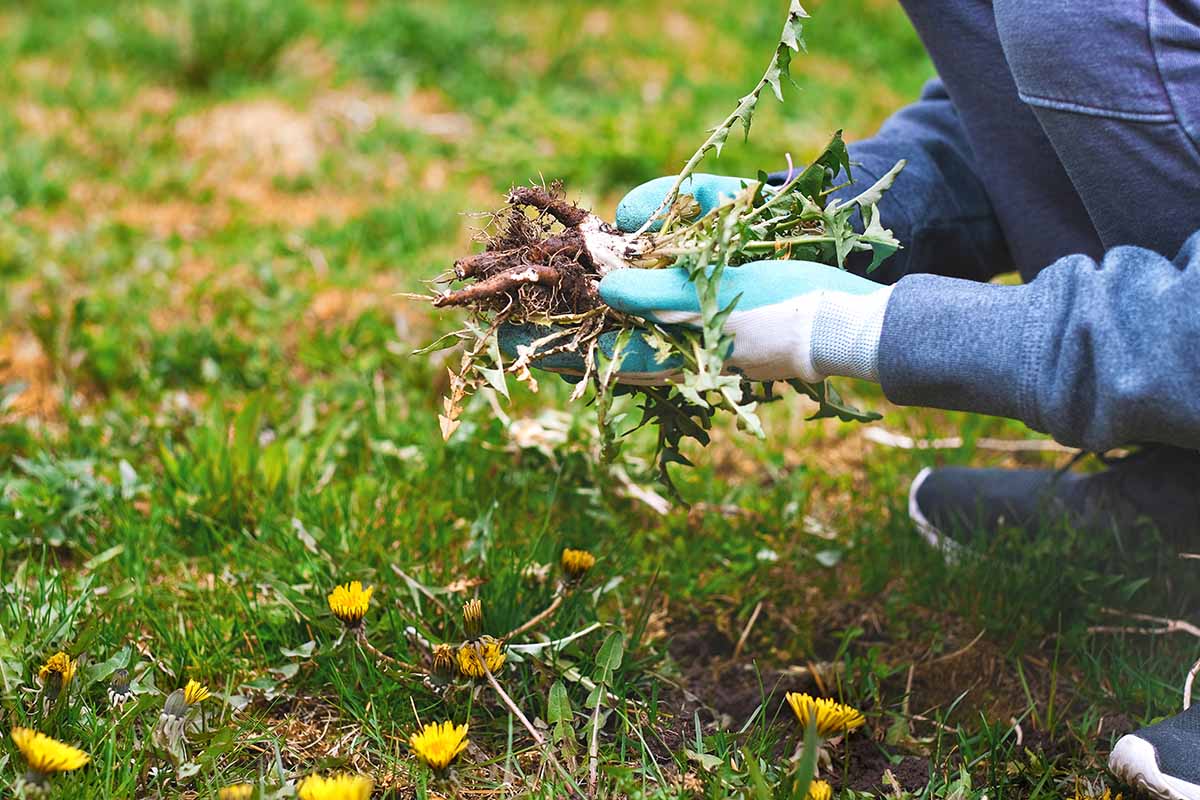
A great way of preventing weeds is to simply grow a lush, thick lawn. When weeds are surrounded by tall, stout blades of grass, it can prevent the seeds from germinating, snuffing them out before they grow and spread.
Take action early and swiftly when you do notice weeds, as weed problems tend to snowball over time. Nothing beats removal by hand or via hand tools, although this does take time and effort.
Alternatively, you could use herbicides – organic ones made from natural ingredients are much better for the environment than systemic ones made from synthetic ingredients.
Remember: whatever chemicals you put on your lawn can eventually run off into nearby creeks and streams, negatively affecting the nature and wildlife around you.
5. Mowing
Mowing your grass is one of the most important things you can do to maintain aesthetic turf. If you don’t, then it’ll look more like a prairie than a yard.
You should mow at least once a week during the growing season, but never remove more than a third of the grass at once. So if your turf is three inches tall, only mow it down to two inches.
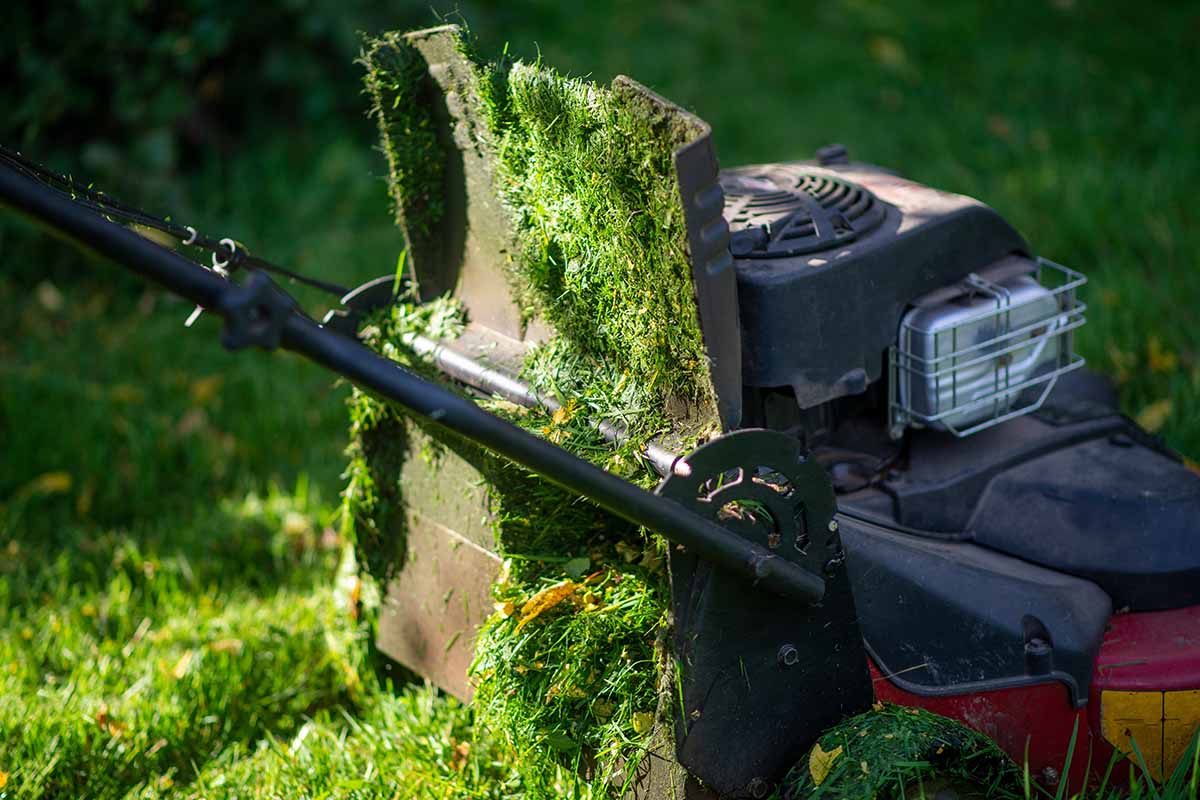
Many folks think they can just mow it shorter so that they won’t have to cut the grass again as quickly, but “scalping” your lawn can stress the grass.
When turf is cut severely, it’ll often grow back faster to replenish what has been cut. But don’t worry – not buzzing your lawn all the way to the ground has a bunch of perks.
With taller grass, you’ll be able to hide problem spots like small bare patches or baby weeds that are more conspicuous in lawns that are cut short.
The longer grass also provides more shade to the soil, which conserves moisture. Longer grass also chokes out weeds more efficiently than short grass, or simply conceals them better.
It’s a good idea to alternate mowing patterns with each cutting – horizontal one week, vertical the next, diagonal after that, and repeat.
By alternating directions when you mow, you won’t be creating ruts, i.e. stripes of compressed grass that are regularly squished down by the mower wheels. A rut-free lawn looks a trillion times better, and is healthier for the grass, too!
Also, save your mowing for when the grass is dry. Cutting wet turf takes longer, gums up the mower with soggy grass clippings, and can litter your lawn with clumps of unsightly clippings.
Another handy tip is to mulch your grass clippings. You could bag them or rake them up after mowing, but letting them fall back to the ground as mulched clippings will add nitrogen to the soil.
Need some mower recommendations? Check out our round-up of gas mowers here.
6. Aerating
After a lot of growing, mowing, and pick-up footballing, a lawn can easily become compacted, which inhibits the flow of water and nutrients necessary for lush turf.
If your lawn doesn’t drain excess water well or exhibits signs of nutrient deficiency despite ample fertilization, aeration can help to loosen up tightly-packed soil.
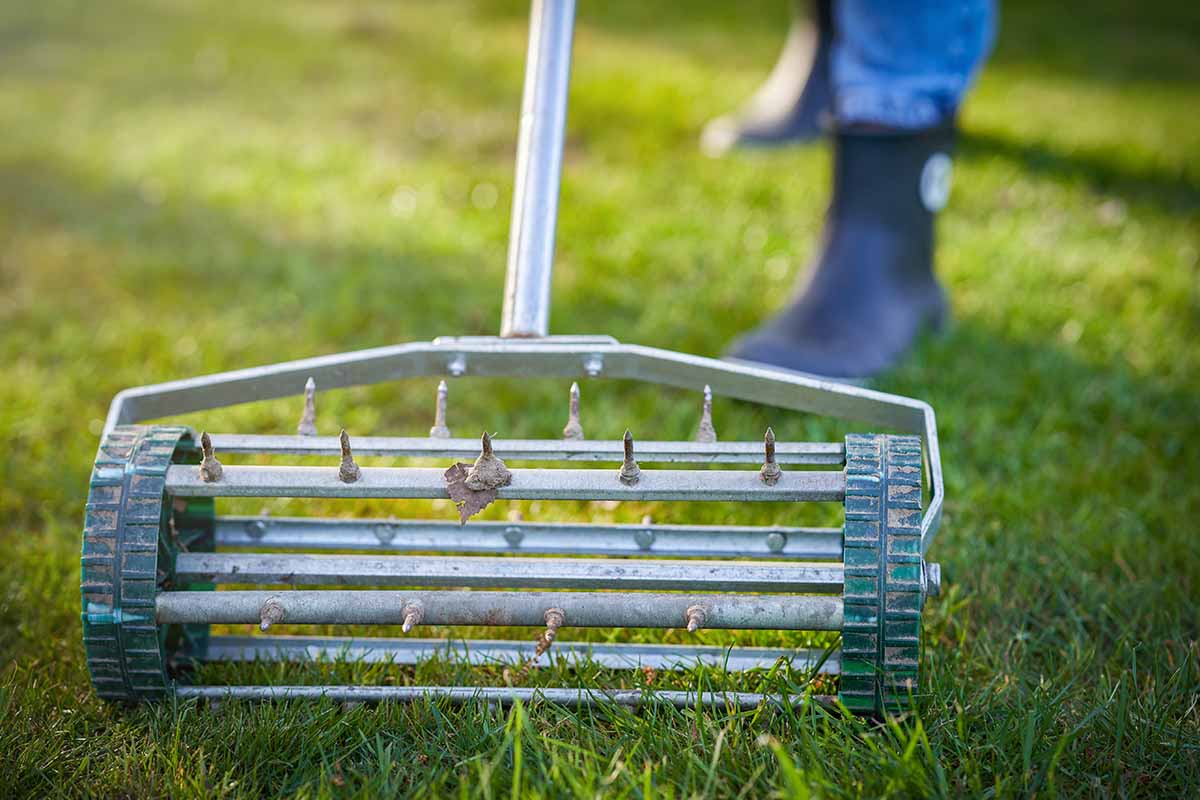
Aeration involves the use of machines – from the small and manual to large and mechanized – to poke into, slice apart, or drill cores out of a too-dense lawn.
With your choice of machine, you’d cover the entirety of your lawn to aerate it, much like when you’re mowing.
Core aeration is one method. Have you ever passed a lawn that looks like a legion of geese made a pit stop after eating too many burritos?
Those aren’t actually goose feces – those are the aerated lawn cores that an aerator removed from the ground and then left behind, which’ll decompose back into the turf in the same way as mulched lawn clippings do.
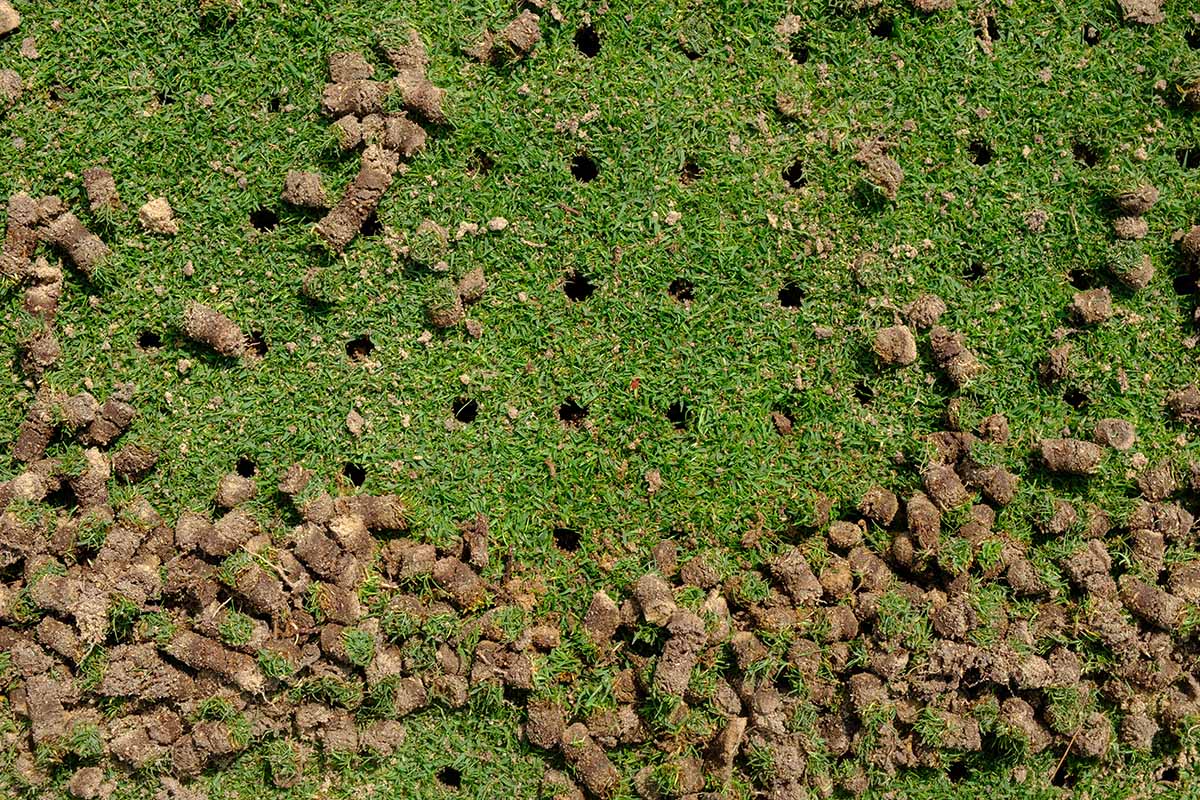
Aerating your lawn every few years during the growing season is sufficient, and this practice will help the soil to become less compacted and allow water and other nutrients to penetrate deep into the root zones of the grass. It’ll also help break down the thatch that builds up throughout your lawn.
Almost every garden center should have an aerator that you can rent to get the job done. Although I suppose you could buy your own, if you’re that passionate about turf aeration.
7. Vigilance
A lawn is an easily damaged canvas. Pests such as grubs, sod webworms, and even burrowing mammals could infest grasses, diseases like brown spot, dollar spot, and fairy ring could afflict the turf, a veered vehicle could leave gnarly tire tracks all across the lawn… a lot can go wrong.
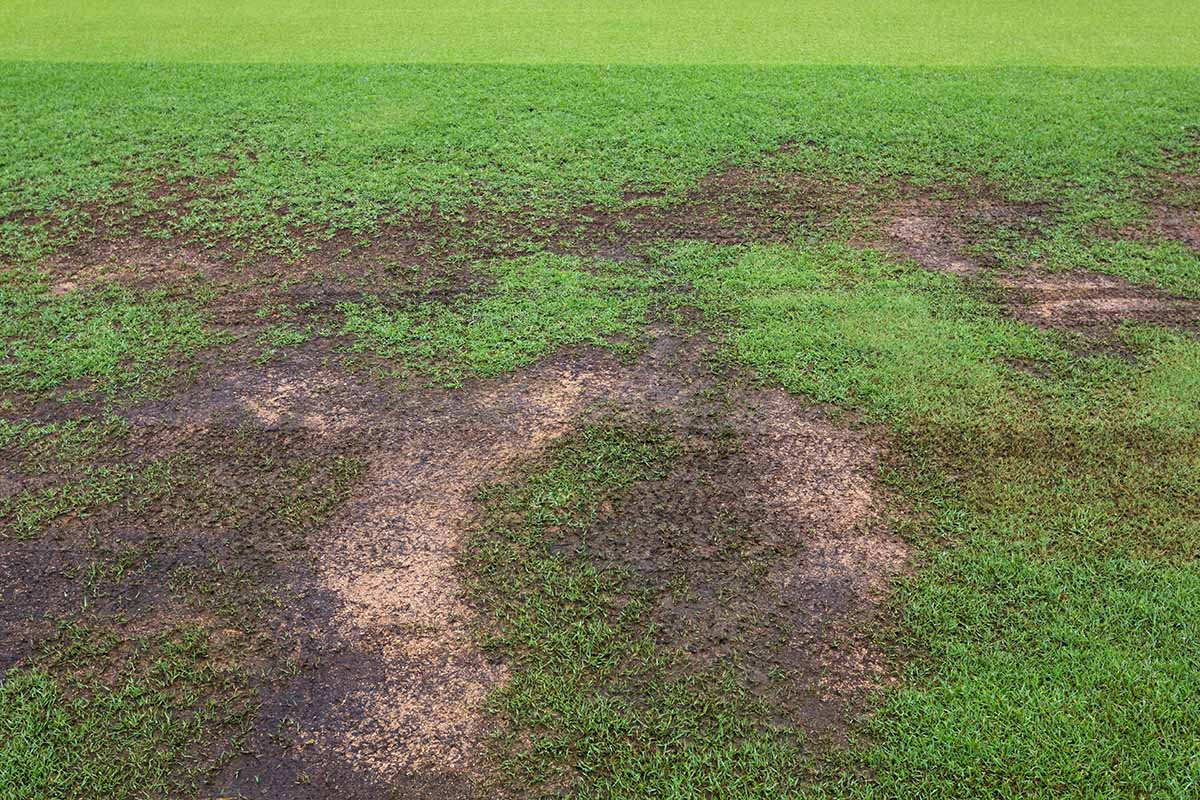
One of the best ways to keep ahead of problems is to keep your eyes open. Regularly survey your lawn for damage, bare patches, and unhealthy-looking turf.
Check for signs of over- or underwatering, conduct a soil test every one to three years, and monitor any freshly sown grass seed.
Just like with anything in life, the more you care about something, the more you’ll pay attention to it. And the lawn is no exception.
Regularly monitor your lawn, and you’ll be able to address problems quickly as they arise.
The Grass Is Always Greener… Where You Water It
If you’re already working hard to cultivate your trees, shrubs, and flowers properly, then optimal lawn care will really keep your landscape looking aesthetically awesome.
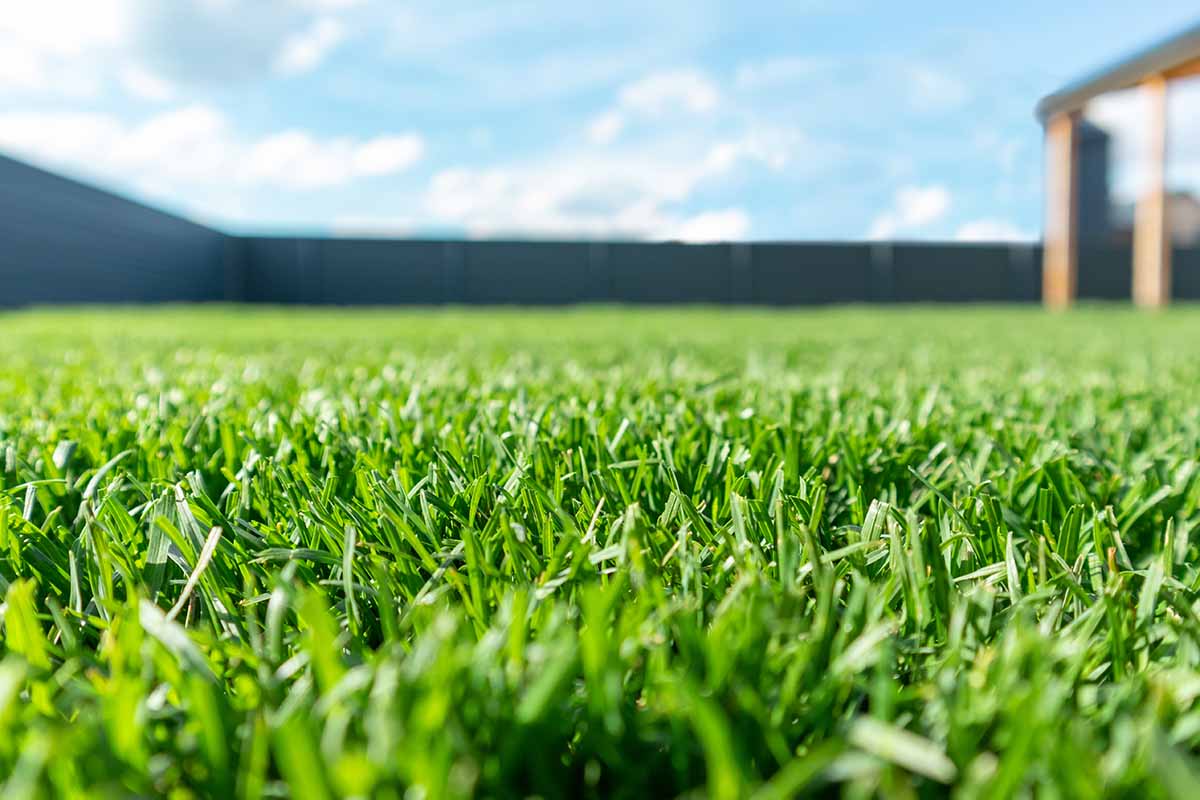
It’s arguable that no landscape feature holds as much aesthetic power as your turf. And with the above tips, you’ll have a great looking lawn on your hands!
Have any tips of your own to add to the conversation? Want some clarification on those we’ve already discussed? Check out the comments section below!
If you want to keep the green grass a-growin,’ check out these lawn care guides next:
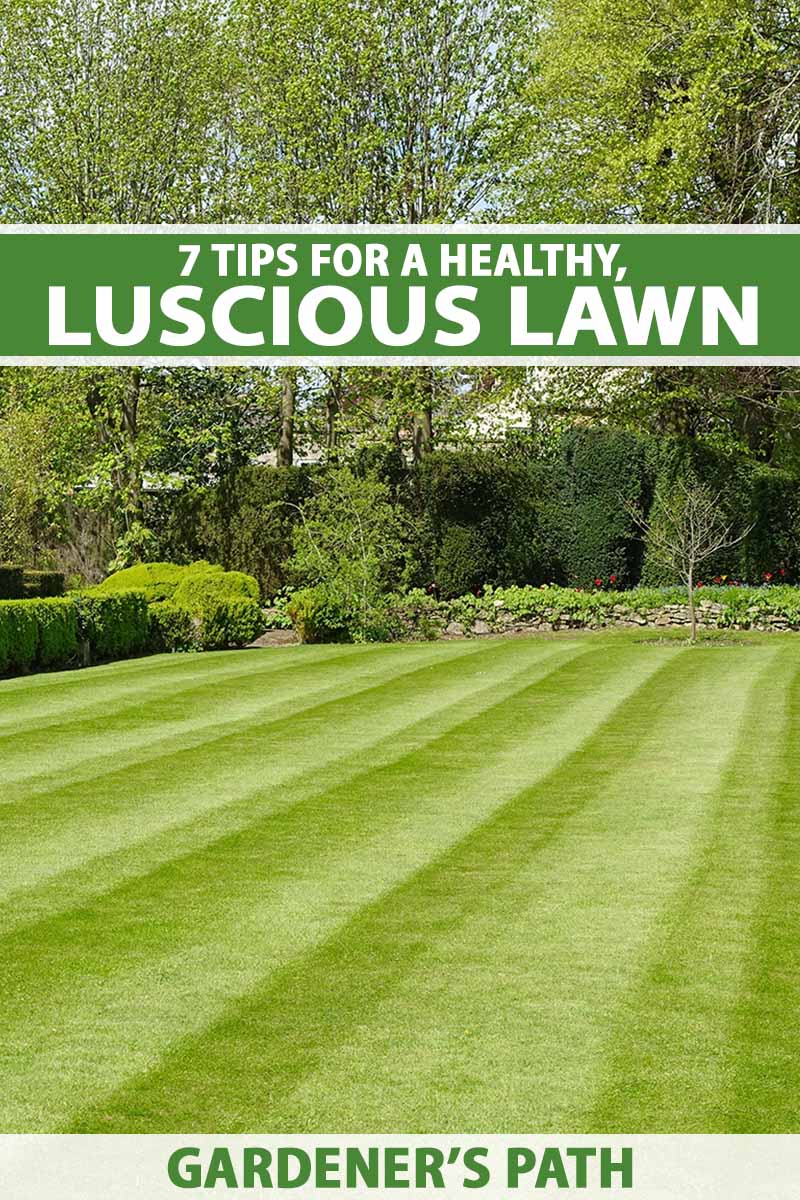
Skip the weed barrier material in planted areas.
Thank you